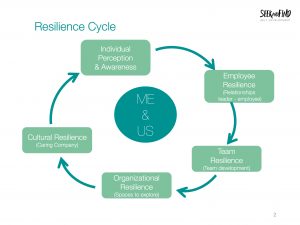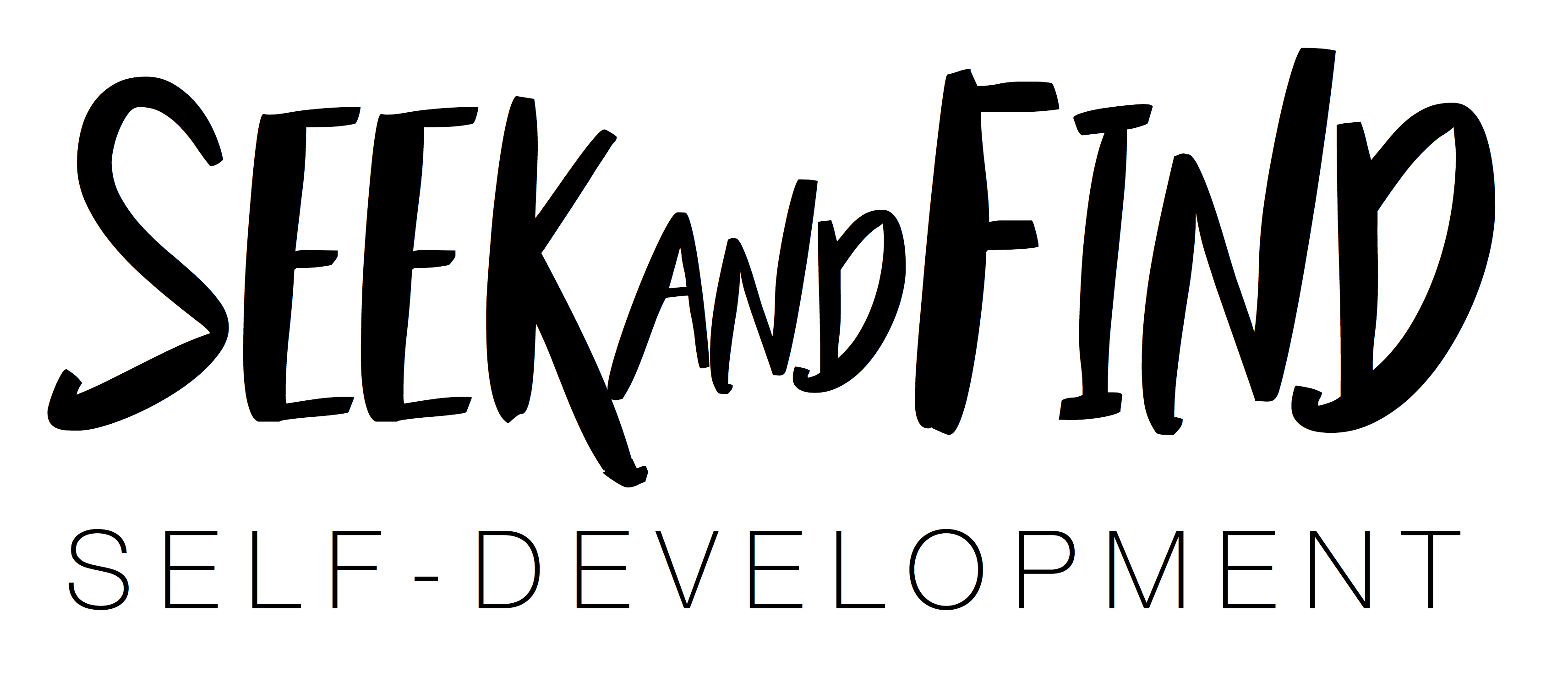Effective development needs attention, meaning, resilience and space!
Change processes, whether personal or organizational, need a lot of focus, energy and clarity. It is important to know where one wants to develop and how the path or direction to this intention can look like. But still much more important than the plan and the strategic adjustment is the meaning, which is pursued with the change project. Because the meaning, or Purpose, is something like the engine for change. If I don’t know what all the effort is for, then motivation and inner drivers are often missing.
Focusing on organizational transformation processes: it will always be difficult to implement a change if the overall organization lacks the purpose behind it, because then the attitude of holding on to the familiar often strengthens, which usually creates resistance to the new. The new could, for example, be the introduction of new leadership; new ways of working, structures and processes (e.g. agility); the use of digital tools; new values & facets of corporate culture; a new business model; a changed identity & employer brand or an internal restructuring.
This is similar to personality development: if I don’t see the meaning behind changing my behavior and attitude, the probability is high that I either won’t start or stop the development at all. Or a kind of an “alibi change” happens, which is so to speak a change on the surface, but unfortunately little is changed in the long term.
So what does it take to ensure a meaningful, effective transformation process?
Especially due to the resistance and uncertainties that arise with regard to the change project, some aspects should be considered carefully. This is especially good to know for drivers of organizational change (Executive board, C-Level leadership team, HR, change agents, etc.)
The 4 keystones for effective transformation
In my eyes, effective transformation can only succeed if the following four phases are observed:
- to PRESERVE the FOUNDATION: to build on what already exists and thus provide security
- to FRAME a MEANING: to show the meaning of the new and to exemplify it (as a leader)
- to STABILIZE INSIDE: to look inwards (of the organization) and to build resilience
- to GIVE SPACE: giving impulses to the stable organisation & letting space to reinvent itself
In detail:
-
to PRESERVE the FOUNDATION: to build on what already exists and thus provide security
When it comes to improvement and development, we tend to look quickly at others and then jump on successful approaches. One might think that what leads others to success must be right and also be able to help us. In some cases, success may come, but what is often forgotten is the individuality and uniqueness of each person and each organization. Standard solutions are often simpler, more cost effective and faster to apply, but especially in transformation processes you are well advised to take a little more time and analyse the initial situation and status quo more precisely in order to plan the change design based on it. Here a cultural analysis can help to get a more holistic picture of your organization and to understand exactly where you stand. Because we often forget that many things are already going well and that we have important resources that we should use as a foundation that provides security in order to develop ourselves and the organisation on this base.
Sometimes we do not even know where we want to go and what we want to develop concretely, but we only feel – for ourselves personally or as a leadership team of an organization – a certain urge for change and development, which often results from the pressure of the market or competition. This urge or uncertainty is not unusual in today’s disruptive times. The renowned researcher Prof. Otto Scharmer from MIT, with whose approach Theory U as a Framework I often accompany development processes, speaks of “Leading from the emerging future”. This means that we are reaching our limits with our previous methods and are in the midst of a great change. This also means that we do not know what the future will look like in many areas of work (see New Work, New Leadership, Digitization, Artificial Intelligence, Generational Change). Currently, many initiatives and approaches are proving playful in trying out and creating new ways and approaches in the world of work. The U process is an effective approach that practices thinking, sensing and acting “from the future” with the person and organization through teaching different levels of listening and building holistic awareness “for the field”.
“At its core, the U-process suggests not jumping from challenge to action, but consciously shaping the structure of one’s own awareness. In this conscious shaping of one’s own awareness lies a knob to perceive future possibilities and to act from them”. (Otto Scharmer)
-
to FRAME a MEANING: to show the meaning of the new and to exemplify it (as a leader)
If the meaning of a change initiative is clear enough to me and I am sure that this is suitable for me as a person as well as my organization, then I (as a leader) can stand for this change and embody, exemplify and drive the new. The question of WHY plays an important role here: Why should we change? What added value does that have for me and us? What effect does this have on the market and our environment? And of increasing importance: What effect does this have on our planet?
As many studies have already shown, the model of extrinsic motivation has had its day. Today, the power of intrinsic motivation counts, i.e. in order to motivate me and my employees from the inside, a connection with the sense and clarity of one’s own contribution is needed.
Only when we have found an answer to the WHY of change, can an authentic framework for transformation, which clarifies direction and meaning, be conceptualizes, curated and made transparent. Nothing is more effective than a leader or leadership team who exemplifies and implements what they want from their employees; and nothing provides more support than a clearly thought-out, meaningful framework with room for your own contributions, autonomy and free space.
“Energy follows attention. Wherever you place your attention, that is where the energy of the system will go. “Energy follows attention” means that we need to shift our attention from what we are trying to avoid to what we want to bring into reality.” (Otto Scharmer)
The framework for an effective change is created by humanizing it and by people exemplifying the new for other people. The intention filled with meaning becomes tangible and perceptible for all participants and the resistance to change gets much smaller. A good example is a change of the leadership culture: If I want less elbow mentality and a collegial togetherness across departments, then it is helpful to initiate this behaviour myself and to reflect and discuss more about it with my colleagues.
An old and still current quote: “Be the change you want to see in this world” (Mahatma Gandhi)
More about changing culture, read here: Culture change.
-
to STABILIZE INSIDE: to look inwards (of the organization) and to build resilience
“The one thing that I have learned from all these projects is that the key to transformative change is to make the system sense and see itself again.” (Otto Scharmer)
Every change process becomes a transformation when the focus is not only on the development goal, but also on one’s own resources and peculiarities and thus attention is paid to strengthening and connecting the organization in order to implement the new forcefully. This creates a strong foundation for conscious, truthful development.
How can a change succeed if the organization has no strength, motivation and resilience?
Let us make this clear to ourselves by means of personal development processes: If I want or have to change, but do not have a full source of strength from which I can draw, then I overstrain myself and the chance to burn out is very high.
On the organizational level, too much strain, exhaustion or fatigue to change can also occur, especially in times of constant change. If we want to equip an organization to survive in times of constant change, we need to promote resilience.
Resilience is a key component for successful transformation.
Resilience stands for
- Resistance, i.e. resistance force, figuratively: “the roots of a tree”.
- Reconfiguration, i.e. flexibility, figuratively: “a mobilé”.
- Regeneration, i.e. the ability to recover & figuring out new ways: “the bamboo plant”.
Resilience, flexibility, the ability to recover and easily figuring out new paths – all important facets for organizations with strong implementation capabilities. When we look at an organization from the inside, we see primarily people and people need strength and motivation to change.
Resilience is therefore the basic prerequisite for being able to survive in today’s times of constant change.
And the special thing about resilience is that it can strengthen and equip the organization as a whole via growth and a kind of domino effect across different levels:

The resilience cycle makes it clear that one can start at different levels in parallel in order to strengthen the resilience of the entire organization.
The following interventions can be meaningful, in order to promote resilience:
– Coachings for leaders and employees
– Workshops on Mindfulness, Self Leadership and Stress Management
– Mindful Leadership or Conscious Leadership Workshops for Leaders
– Team coaching & team development
– Leadership Culture Development
-
to GIVE SPACE: giving impulses to the stable organization & letting space to reinvent itself
And if I promote the resilience of my organization and a certain stability and basis is created, free spaces for thought and creativity will automatically open up. Those who feel secure and strengthened have room for creativity, new ideas and innovations.
But that also means that real transformation needs freedom, open spaces for thinking and development to take place. Especially when we pursue the desire for more meaning, think of new work, new working environments and new leadership, it is time to let go of old past patterns. Only if an organization allows freedom to develop and find itself, then the sense in the emergence and creation of the new arises all by itself and many employees of the organization sit motivated in the boat, because they feel the new direction from the beginning and are actively involved in the implementation.
Unfortunately, it can often still be observed that the seemingly new is actually something familiar in a new guise. A good example is the changeover to agile processes, which often only remains a process introduction instead of being a cultural change. Agility is so much more than just a new process, it is an attitude and attitude towards working and leading together.
Taking new paths and leaving the old ways of doing things usually means taking challenges and risks. But challenges also embody a really exciting, exhilarating side.
True transformation can be compared to walking a beaten track instead of a paved road.
Paved roads are easy to drive on, with proven vehicles and means of transport. But when I choose the beaten track, it is usually not passable as I am used to it, so I have to try again and again how to get on there. The way is different, may be difficult to see or muddy in between, but at the end you always arrive somewhere: mostly with new knowledge about yourself, because you have walked a way that was not signposted and easy.
How could such a trail for organizational development look like?
One who decides to change itself or the organization, has in the best case a rough direction or a sense of this idea in the view, and then starts exploring… On a beaten track you need a good inner compass to find the right direction. Therefore the stabilization from the inside (see point 3), because signs and side roads are rare here. Only by walking on and turning into new paths, realizations and characteristics open up. This requires courage and composure.
“The ability to shift from reacting against the past to leaning into and presencing an emerging future is probably the single most important leadership capacity today.” (Otto Scharmer)
Here, of course, you have to ask yourself how much I guide, e.g. as management and how much I let go and give room to explore.
This polarity of control and letting go is essential for the emergence of new paths and innovations.
Here there is no right and no wrong, here there is only the way and degree of freedom that feels good for you as an organization and that is manageable.
Of course, it can also be that the new way is not the one for all employees and managers, let go is also in demand here. If I know that the development alone makes sense, then I have confidence that the right people will stay and I will attract new people (new identity and employer brand) in order to implement the day-to-day business powerfully and resiliently initiate and sustain waves of change again and again.
Like a deeply rooted tree, a mobilé and a bamboo cane at the same time – stable & robust as well as mobile & flexible.
Film recommendation: “The silent revolution” by Kristian Gründling – about the radical change in corporate culture at Upstalsboom Hotel + Freizeit GmbH & Co. KG.
If you feel like effective and conscious transformation, I look forward to hearing from you.
Phone:030-82079743
Mail: contact@seekandfind.me or contact form.
Photocredit: Evandro Saroka (unsplash.com)

